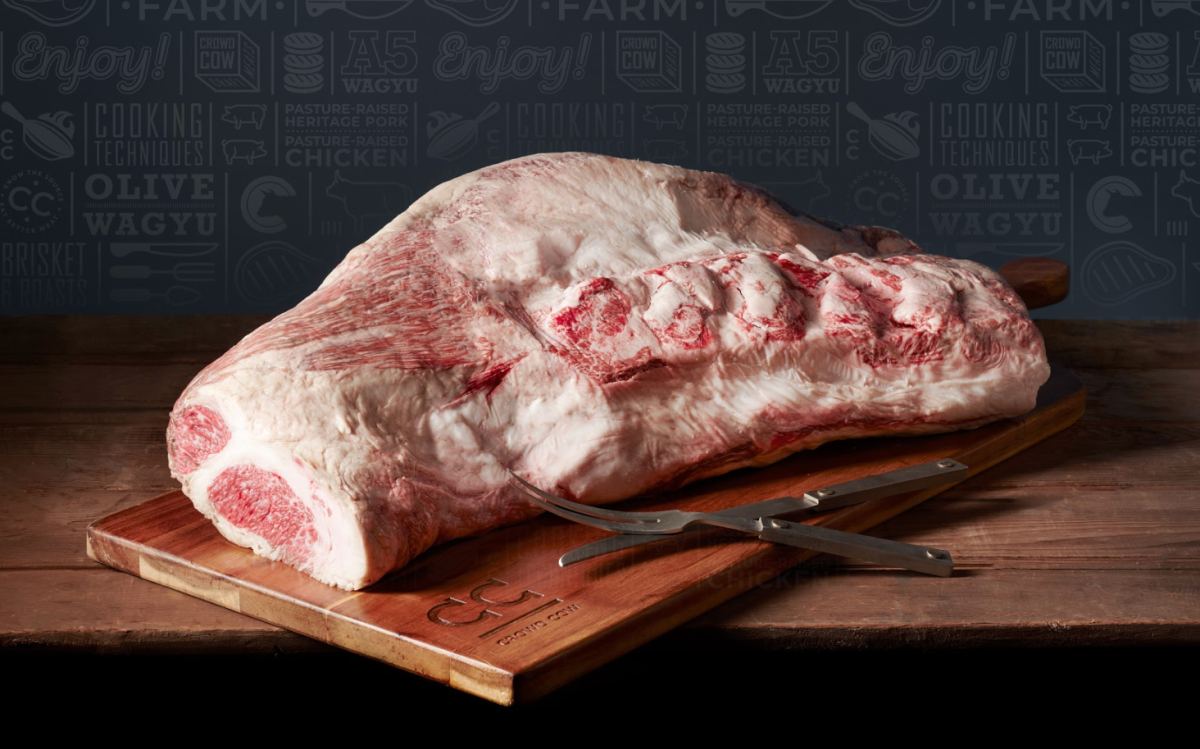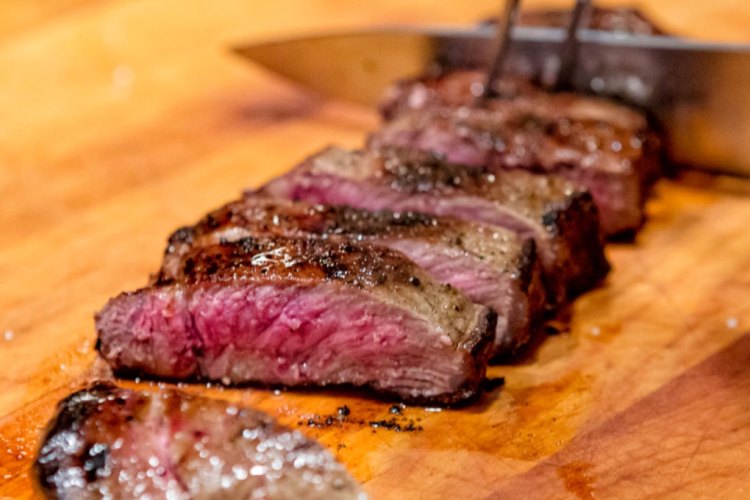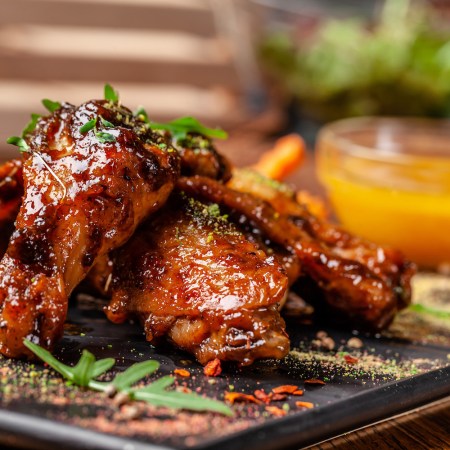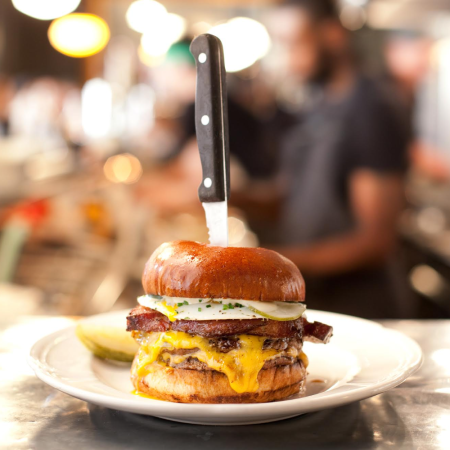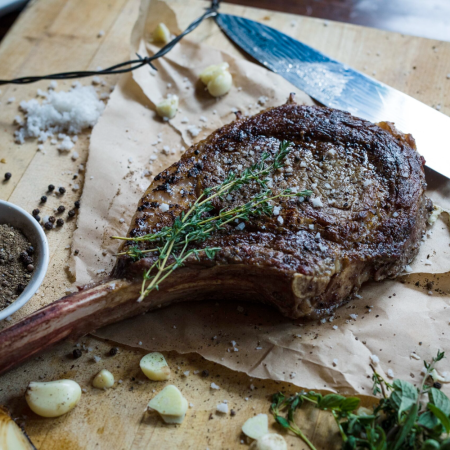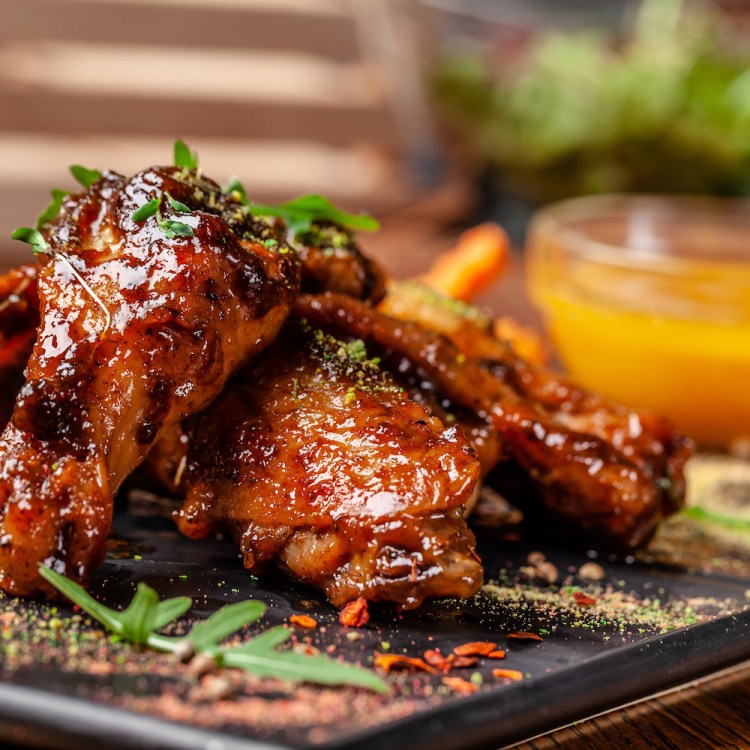As the holidays approach and the temps grow colder, it is likely that your diet will veer in the direction of heartier, richer foods. In simpler terms: it’s beef season, baby, and you can and should feel free to leave the lighter fare of summer behind and indulge in it.
Your first instinct will probably be to reach for the old standbys: New Yorks. Filets. Rib-eyes. Lean ground. The stuff that you know and love, and more importantly, are able to prepare with confidence.
But here’s the thing about our tasty bovine brethren: they are rather large. And by sticking exclusively to what’s comfortable, you’ll leave some truly delicious cuts on the table.
So today, we’re asking you to broaden your beefy horizons with four lesser known cuts of beef. Not sure what the hell to do with them? Don’t worry, we tapped the team at Seattle-based beef purveyor Crowd Cow for some notes on how to pick ‘em, pair ‘em and prepare ‘em.

The Hanger Steak
The skinny: Also known as the hanging tender, this steak comes from the muscle that supports the diaphragm. It’s the piece of meat that hangs as the butcher cuts it — hence the hanger. The cut is ideal for marinating and enjoying thinly sliced. “I love hanger steak,” says James Beard award-winning author Steven Raichlen (The Barbecue Bible). “I first discovered hanger steak during my student days in Paris. It was rich, big-flavored, and super beefy. Above all it was affordable. I still love it, and it’s one of the few steaks that calls for a sauce. My favorites: mustard cream sauce or red wine bacon sauce.”
How to pick out the perfect piece: This thin cut should have a dark red color with cleanly trimmed edges.
How to prepare it, in four simple steps …
- Season liberally with salt and keep refrigerated
- Coat lightly with an oil that has a high smoke point (like vegetable or grapeseed) or clarified butter.
- Cook directly over grill flame or in a very hot pan. The ideal temperature to cook to is 135 °F.
- Don’t forget about carryover cooking. Pull from heat just as internal temp reaches 130 °F. Rest before slicing.
Pair it with: Potatoes are a good neutral side that can add richness to the otherwise leaner cut. A classic sauce like chimichurri will also add acidity and freshness to the bold, beefy flavor of the steak.
And drink: Malbec. This cut is extremely renowned in Argentina, where some of the world’s best Malbecs are produced. The fruitiness of the wine is a nice counterbalance to the bold and sometimes mineral flavor of the meat.
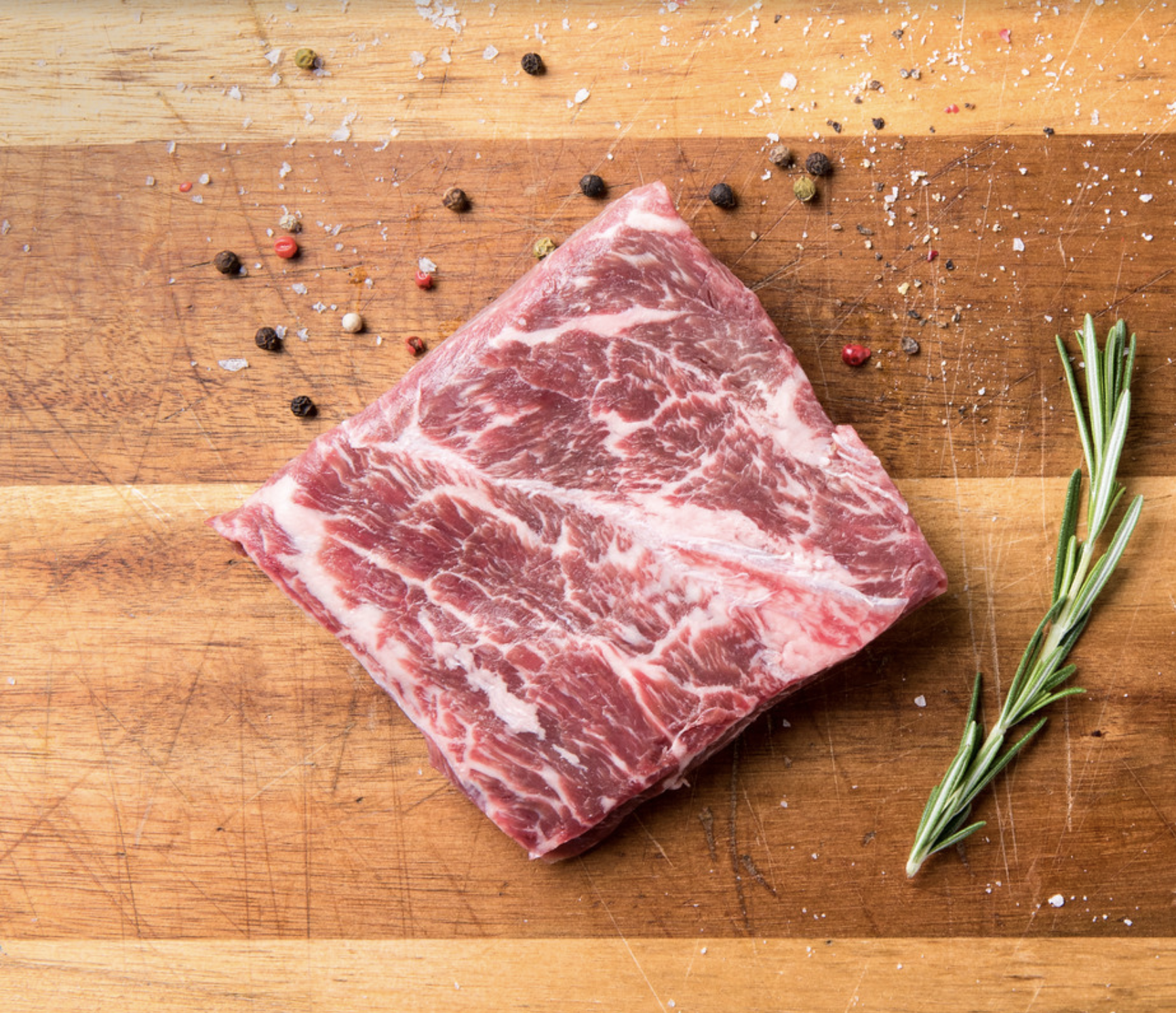
The Flat Iron Steak
The skinny: Culled from the shoulder and devastatingly underrated, the flat iron rates as the second most tender cut on the entire animal, beaten out only by the tenderloin. The story of how it got its name is pretty straightforward: it looks like an old-fashioned flat iron.
How to pick out the perfect piece: Look for rich, dark red color and even thickness all the way across.
How to prepare it, in four simple steps …
- Season with salt and pepper. (Garlic and onion powder are also a nice touch.)
- Using a two-zone fire with both indirect and direct heat, sear the steak over the hot side to get a crust on the outside.
- Finish to a perfect medium rare at 135 °F, or dial it up to 140 °F for medium.
- Slice across the grain and finish lightly with high-quality salt.
Pair with: Charred broccolini and fresh tomato salad. Brassicas like broccolini can be seasoned with bold flavors like garlic and red pepper to add depths of flavor to this mild but tender cut. When charred, they maintain a crunch to add a textural component. The tomatoes add acidity and freshness as well as a nice pop of color.
And drink: Porter or Merlot. The rich maltiness of a porter goes well with the flavors of the steak and can stand up to the bold flavors coming from the vegetable sides. Merlot is a solid all-around wine that can adapt to the multitude of flavor components of the dish with ease.

The Denver Steak
The skinny: A newer cut to the steak world, the Denver cut is less than a decade old and comes from the inside area of the chuck, also known as the chuck roll. It obtained its name because marketers put together a consumer focus group and found the name “Denver Steak” appealed to customers. Don’t be turned off by the PR-savvy backstory — this cut is delicious. The Denver is typically more marbled but tougher than a New York, yielding an incredibly beefy flavor at a fraction of the cost.
How to pick the perfect piece: This teardrop cut should be dark red with even, intense marbling.
How to prepare it, in four simple steps …
- This cut is perfect for sous vide. Seal in a bag with salt, pepper, a garlic clove and fresh herbs like bay leaf, rosemary or thyme sprigs. Add a pat or two of cold butter and seal.
- Immerse into the water bath set at 130 °F. Cook for a minimum of one hour if fresh, 1.5 hours if frozen. Afterward, remove from the water bath and bag, then pat dry.
- Heat a pan on high until extremely hot and sear the steak just until a crust forms.
- Slice and serve.
Pair with: Creamed spinach and potato gratin. Both of these sides are steakhouse staples that work very well with the herb flavor imparted during the sous vide process. They also add richness to the steak and are enhanced when mixed with the juices from the sliced meat.
And drink: Unoaked chardonnay. The crisp notes of an unoaked chardonnay can complement the mineral notes in the steak and also serve as a fresh balance to the richness of the recommended sides.
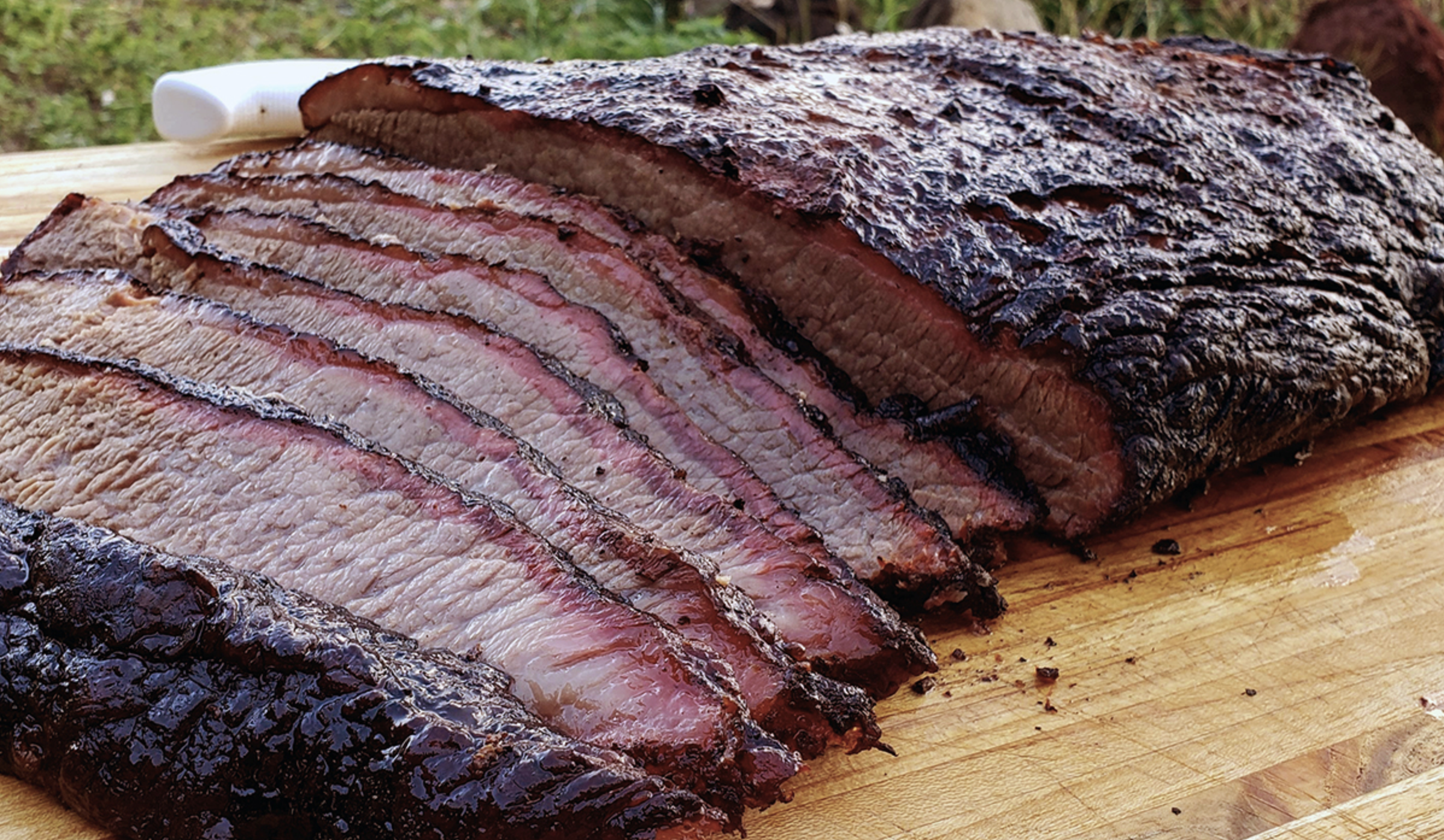
The Brisket
The skinny: Known for its juicy and beefy flavor, the brisket is synonymous with barbecue and Texas culture. It’s a cut that comes from the breast or lower chest, which is exactly where the name comes from: breast = brisket. Sourced from an award-winning Japanese prefecture, Crowd Cow’s Japanese Wagyu brisket is one of the rarest cuts in the world, because it’s not a traditional cut for Japan and rarely exported to the U.S,
How to pick the perfect: Fattier and bigger than your typical brisket — get it from Crowd Cow.
How to prepare it, in four simple steps …
- Use a Dalmatian rub (50/50 salt and black pepper) and bring to room temperature while heating your smoker to 205-225 °F.
- Smoke until the internal temperature is between 160-180 °F.
- Remove from smoker and wrap in butcher paper.
- Return to smoker wrapped. When the internal temp hits 200-205 °F, remove and rest for up to three hours in an insulated cooler.
Pair it with: Vinegar-based coleslaw or pickles. The vinegar in these sides cuts through the extreme richness of the Japanese wagyu brisket. They also aren’t as filling as typical barbecue sides to compensate for that very same richness.
And drink: Rye whiskey or an IPA. The oak flavor of barrel-aged whiskey underscores the smokiness and BBQ flavors while the spiciness of the rye cut through the richness of the brisket. The crisp, bitter notes of an IPA are able to stand up to the smoke flavor and balance out the richness.
Join America's Fastest Growing Spirits Newsletter THE SPILL. Unlock all the reviews, recipes and revelry — and get 15% off award-winning La Tierra de Acre Mezcal.
